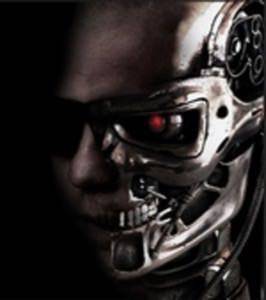In the last two posts in this series, we discussed the Web of data, which makes structured interlinked data sets machine-accessible, and the Web of identities, which makes data about people machine-accessible while addressing privacy and data volatility.

This time, we’ll focus on the Web of services, which makes services accessible to and processable for machines. These Webs all have a semantic architecture in common and follow basic Web principles, such as being decentralized, modular, simple, addressable via URIs, and built for machines.
The services sector has become the world’s biggest business sector, accounting for 64% of the worldwide gross domestic product. The sector has pressure on it to make its services easier and more widely accessible, as well as to quickly adapt to ever faster changes in the market environment.
The effort to standardize such things as service-oriented architectures (SOA) and Web services has taken years, but still we have no clear definition of what constitutes a service at a conceptual level. The interface, which is the format of what goes in and out of the service, is often described formally, but what the service is actually doing, semantically speaking, is not. While there are a number of different approaches to semantically describing Web services, such as OWL-S, WSMO and WDSL-S, none so far has managed to break out of its academic confines.
Today, there are already all kinds of services with different levels of complexity, and their number is expected to grow exponentially. The services follow different standards, and a lot of them are proprietary, uni-directional and designed to be used by humans to mash up something new. Editorial catalogs such as ProgrammableWeb and search engines for Web services such as seekda are designed for humans who are searching for a particular service for that reason. For tasks that are unsolvable for machines, there are even Web services such as Amazon’s Mechanical Turk, which have humans in the back end answering tricky queries.
The problem with all of this is that each of the tens of thousands of services is accessible but not findable by a machine without a machine-understandable description. Thus, every service nowadays has to be wired to a machine by hand. So, what would machines be capable of if services were annotated with semantic descriptions?
- Service discovery
Given an index of Web services, a machine charged with finding the right service for a particular problem could choose one among those that have been indexed. - Contracting and execution
Once a service has been selected, a machine could look up its terms and decide on contracting and execution details. How often would the service be needed? And what would be the cheapest contract then? - Billing or revenue sharing
Depending on the autonomy of the machine, one could imagine something like an Autonomous Agent, which automatically makes the best deal with the service provider on such things as billing or revenue sharing for service usage. - Replacement on failure, based on experience
Of course, the machine would be able to replace a failing service with an equivalent one. It could also rate a service and publish it. - Service orchestration
A machine could, given enough intelligence, split a task into sub-tasks and then discover, contract and orchestrate services to solve these sub-tasks. And after the sub-tasks have been addressed, the main task would be solved. Such orchestration could involve the parallelization of tasks, for speeding up or redundancy purposes, or chaining services (whereby the output of one service is inputted into the next).
Research projects such as TripCom, SUPER, SHAPE and SOA4All are dealing with these ideas and scenarios.
Future scenarios are limited only by our imagination: machines could autonomously pursue goals on behalf of their master user or company, according to a specified level of freedom. These agents could solve increasingly complex problems and be granted increasingly more autonomy (finally ending up as Skynet).
In the next and final post in this series, we will discuss how all of these scenarios could become a reality with the arrival of all three Webs: a revolution in the ability of machines to access, process and apply information.
Do you also count the Web of services as a third Web? Where do you see its limits?
(Photo by zorro-art.)

















